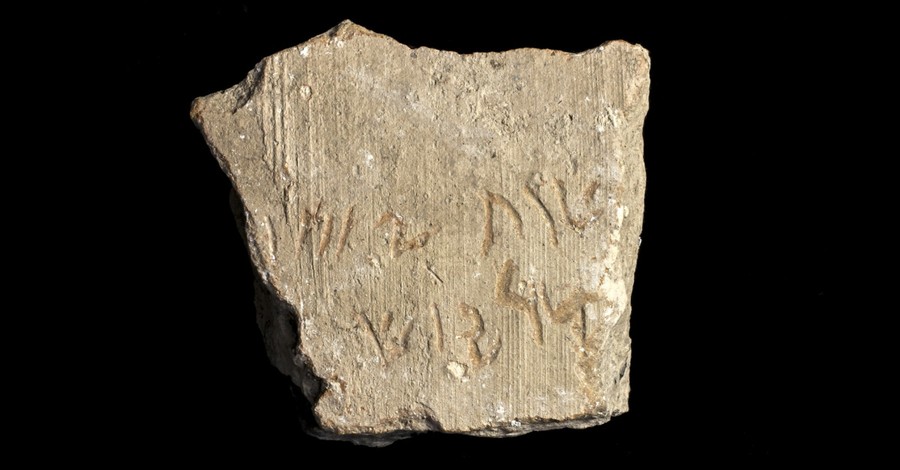
A 2,500-year-old pottery shard listing the name of King Darius of the Bible has been found in Israel in what researchers are calling a first-of-its-kind discovery.
Persian King Darius – also known as "Darius the Great" – is referenced multiple times in the book of Ezra as playing a pivotal role in helping the Israelites rebuild the temple in Jerusalem. Darius lived about 500 years after King David and around 500 years before the birth of Christ.
Ezra 6:14 says the Israelites finished rebuilding the temple "according to the command of the God of Israel and the decrees of Cyrus, Darius and Artaxerxes, kings of Persia." (Many scholars believe Darius the Great is a different king than "Darius the Mede" in the book of Daniel.)
The pottery shard was discovered in Israel's Tel Lachish National Park with an Aramaic inscription reading, "Year 24 of Darius." It dates to 498 B.C.
Incredibly, it was found by two hikers. They were Eylon Levy, the international media advisor to Israel President Isaac Herzog, and Levy's friend Yakov Ashkenazi.
"When I picked up the ostracon and saw the inscription, my hands shook," Levy said. "I looked left and right for the cameras, because I was sure someone was playing an elaborate prank on me."
At first, archaeologists were skeptical. But tests confirmed its authenticity, according to Israel's leading archaeological body, the Israel Antiquities Authority. A paper about the find will be published in the Israel Antiquities Authority journal.
"This is the first discovery of an inscription bearing Darius the Great's name anywhere in the Land of Israel," the authority said. The pottery shred may have been an "administrative note" similar to a receipt for goods, it added.
The Israel Antiquities Authority surmised that the pottery shred may have been leftover from a British archaeological expedition from the 1930s. It was then that British archaeologists "uncovered an elaborate administrative building from the Persian period, built on top of the podium of the destroyed palace-fort of the Judean kings."
"The Persian-era residence extended over a large area and comprised elaborate halls and courtyards with a majestic columned portico entrance in Persian style," the authority said. "Today, only the pillar bases remain in place on the mound as the British expedition dismantled the remains of the elaborate Persian building in order to excavate the underlying Judean palace."
Photo courtesy: ©Israel Antiquities Authority, used with permission.
Michael Foust has covered the intersection of faith and news for 20 years. His stories have appeared in Baptist Press, Christianity Today, The Christian Post, the Leaf-Chronicle, the Toronto Star and the Knoxville News-Sentinel.










